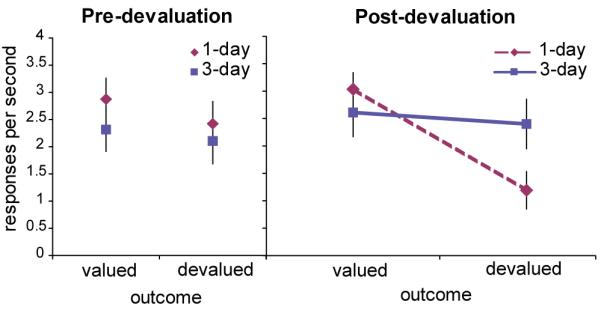Fig. 2.

Behavioral results. During the last session of training, prior to the devaluation procedure (left), there are no significant differences in response rates between groups or when responding for the two food rewards (one which will be devalued through selective satiation and one which will not). During the extinction test following the devaluation procedure, response rates for the still-valued outcome remained high, as did response rates for the devalued outcome for the 3-day group. In contrast, response rates for the 1-day group for the devalued outcome are reduced, producing a significant training by devaluation interaction (P < 0.05).
